When comparing and contrasting the mitochondria and chloroplast, a person learns all of the similarities and differences between the two. In this essay, you will read about the mitochondria, the chloroplast, and their biochemical reactions.
The mitochondria often referred to as the powerhouse cell is found in the eukaruotic cells. There, those cells are often found in groups of hundreds. Mitochondria cells can be anywhere from 1 to 10 um long in length, but are able to change shapes, move, and divide into two. The cell itself is enclosed in an envelope of two membranes. The outer membrane is smooth while the other is convoluted with unfoldings called cristae. The mitochondrion becomes even more complex when divided into its two internal compartments, the intermembrane space and the mitochondrial matrix.
In the mitochondria, the biochemical reaction, respiration takes place. The balanced formula for respiration is C6H12O6 + 6 H2O Ã 6 H2O + 6 O2 + E, the catalyst being enzymes.
Respiration is when oxygen is consumed as a reactant along with the organic fuel. In order for the process take place, food must be available, along with oxygen. The first two stages occur due to glycolysis and the Kreb's Cycle. These processes decompose glucose and other organic fuels. Glycolysis, which occurs in the cytosol, begins breaking down glucose into two molecules of a compound called pyruvate. The Kreb's Cycle finishes what has been started by decomposing of what is left of the pyruvate into carbon dioxide. The third stage involves the electron transport chain. The chain takes electrons from the breakdown products from the previous stages, and in the end, water is created. During respiration, if oxygen is present, the pyruvic acid will be sent for conversion in the mitochondrion, which produces ATP molecules.
Chloroplast both alike and dislike the mitochondria is a specialized member of a closely related plant organelle called plastids. Chloroplasts contain the green pigment chlorophyll along with enzymes and other molecules that function in photosynthetic production of food. Structurally this cell is lens shaped and measures about 2 um by 5 um. Chloroplasts are found in leaves and green organs of plants and eukayotic algae. These cells too are enclosed in two membranes. As with the mitochondria, the static and rigid appearance of chloroplast in electron micrographs is not true.
In the chloroplast, photosynthesis takes place. The formula for this process is just the opposite to respiration, being that in photosynthesis, energy is gained, not released, 6 CO2 + 6 H2O + E Ã C6H12O6 + 6 O2, with the catalyst being enzymes. Photosynthesis can only affect plants, being that chloroplast exists in them and not in animals or humans. According to the formula, plants must have carbon dioxide, water, and energy from the sun in order to produce glucose and the air we breathe, oxygen. There are two stages when executing photosynthesis, light reactions and the Calvin Cycle. The light reactions are the steps of photosynthesis that convert solar energy to chemical energy. Oxygen atoms from water molecules are a source of the oxygen that we breathe in the atmosphere. The carbons from the carbon dioxide that we exhale, and the hydrogen from water molecules, are the sources for these atoms to build carbohydrates. The sun breaks down water molecules to help make carbohydrates and oxygen, this process is called photolysis. The next sequence of chemical reactions is commonly referred to as the dark reaction. This reaction unlike the light reaction does not need light. The carbon, hydrogen, and oxygen atoms then leave the thylakoids and move into the stroma where they form carbohydrates. The carbon dioxide molecule then becomes unstable and the splits. The ending molecule, PGLA, is used to form the end products of photosynthesis.
So in conclusion, you can see that the mitochondria and chloroplast are very complex and contain many different elements.
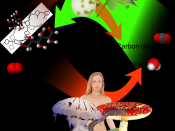
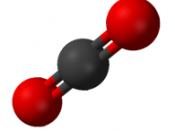
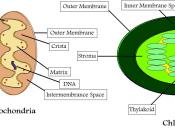
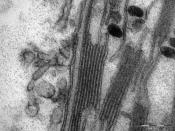
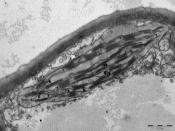
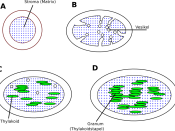
Good
Overall the essay is good.
The biological facts are managed well and presented systematically. It's always not easy to compare two things coz you really need a clear concept of the two things so that you can sort out the differences between them. This approach which discribe the features and the functions of mitochondria and chloroplast separately is better than pointing out the comparisons one by one in this case. However, the conclusion is where you need to improve on.
3 out of 3 people found this comment useful.